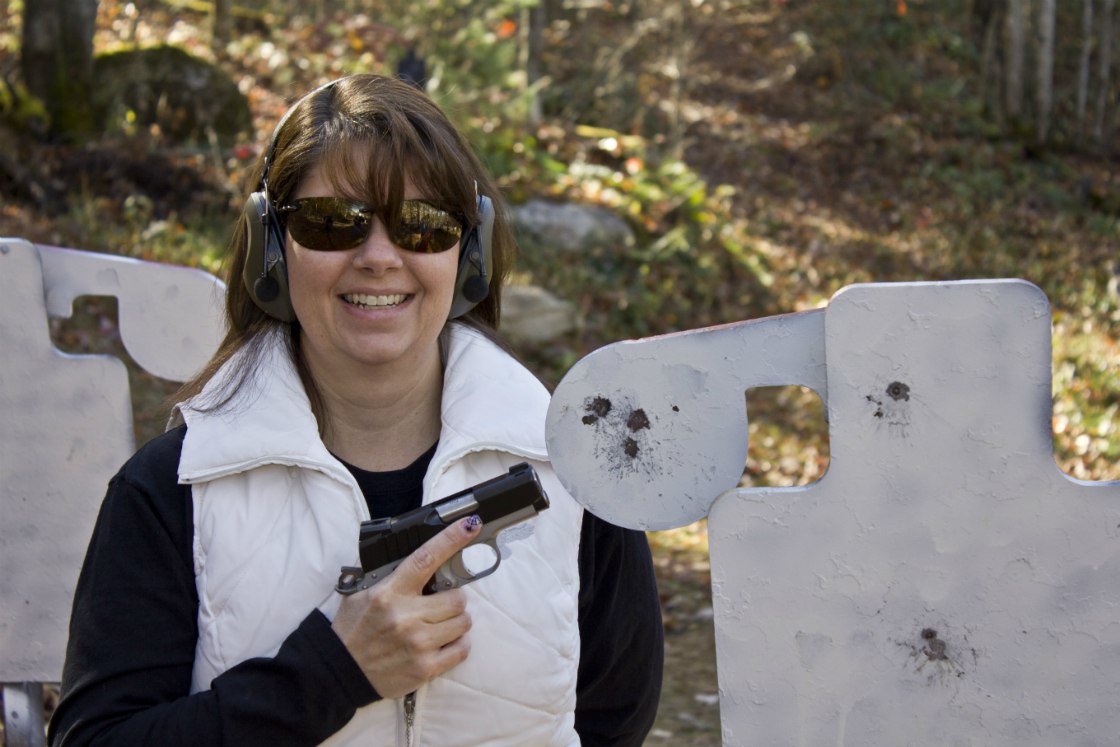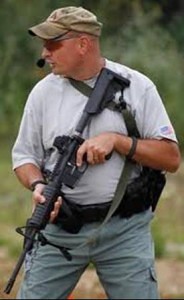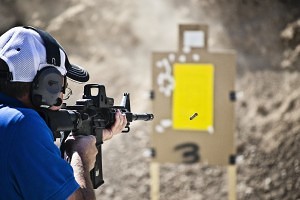 Action Target’s annual Law Enforcement Training Camp ended Friday as instructors and trainees parted ways after another year of advanced law enforcement training.
Action Target’s annual Law Enforcement Training Camp ended Friday as instructors and trainees parted ways after another year of advanced law enforcement training.
This year’s LETC was attended by 147 law enforcement officers and firearms instructors from across the country and the world. More than 20 states were represented with officers from California and Oregon to Florida and New York. While LETC is traditionally a domestic law enforcement camp, as its fame has spread throughout the world, we’ve increasingly received requests to attend from foreign law enforcement agencies. As in years past, we were pleased to welcome officers from Canada, but this year was especially unique with the addition of participants from Brazil and China.
On Monday, Sept. 10, officers arrived at Action Target’s headquarters to sign in and pick up their gear which included personalized water bottles and dog tags. They were also able to tour the facilities where all of Action Target’s products![]() are designed, engineered, and manufactured.
are designed, engineered, and manufactured.
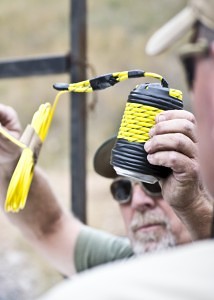
Classes started Tuesday morning at the Utah County Sheriff’s Office Thistle Firing Range. New to this year’s training classes were George Harris’ Combat Skill Drills for Firearms Instructors, Bob Schneider’s Shoot House Training, James Washington’s Training for the Fight with the Pistol, and Brian Hoffner’s Extreme Close Quarter Battle Tactics with Hands, Knife, and Pistol. A total of 12 instructors participated from a variety of organizations including Spartan Tactical Training Group, Safariland Shooting School, Hoffners Training Academy, Glock Training Division, Police Training Division, JDS Tactical, and Fusion Tactical and Combatives.
On the first day of class, the Utah County Sheriff’s Office explosives department set up a demonstration to kick things off with a bang. A charge was placed on the hill next to the uppermost firing range and was connected to several additional charges that ran down the hill and along the periphery of the range. To demonstrate the delay mechanism’s non-electric shock tube technology, a sniper shot the main charge from atop a storage container setting off a series of explosions down the hill. The explosives department also demonstrated several forced entry explosive mechanisms as well as a unique steel puncturing technology consisting of a coil of explosives wrapped around a beer can.
Wednesday night, more than 50 officers at the camp put their skills to the test in the Dirty Harry shooting competition as they vied for free tuition at next year’s LETC. Participants were required to shoot 21 colored knock down targets![]() from three corresponding colored boxes. Shooting the wrong color or shooting one of the six no-shoot targets meant instant disqualification. Law enforcement officers from Utah crushed the competition taking first, second, and third places. Officer Rob Wilkenson of the Utah Highway Patrol took the grand prize winning by more than five seconds with a time of 23:19.
from three corresponding colored boxes. Shooting the wrong color or shooting one of the six no-shoot targets meant instant disqualification. Law enforcement officers from Utah crushed the competition taking first, second, and third places. Officer Rob Wilkenson of the Utah Highway Patrol took the grand prize winning by more than five seconds with a time of 23:19.
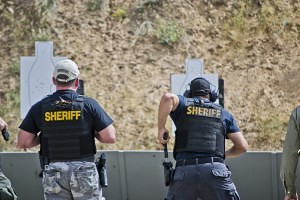
A banquet was held Thursday evening to honor the dedication and sacrifices of law enforcement officers throughout the nation and the world. McKenzie Matthews began the banquet by singing the “Star Spangled Banner” and was followed by Provo Mayor John Curtis who gave the welcome speech. The night’s program centered around the memory of the brave men and women who lost their lives in the protection of our freedoms. The Payson High School Pipe Band performed ‘Amazing Grace’ as photos of law enforcement officers who died by gunfire this year were shown on a projector screen during a special memorial for fallen officers. A memorial was also held for law enforcement who lost their lives in the 9/11 attack. Deputy Chief Steven J. Silks of the New York Police Department, a participant in this year’s camp, spoke of his experiences that day and shared a firsthand account of the bravery exhibited by the brave men and women he served with during that catastrophe.
The camp ended Friday afternoon with a few final classes before attendees began their long journeys home to locations across the nation and the world.
We at Action Target were honored to have so many exceptional officers at this year’s camp, and we hope that each one took home something new that they can share with the men and women they serve with. Superior law enforcement training has always been one of our corporate missions, but we couldn’t make that happen without the continued assistance of our instructors and the participation of the world’s finest. To everyone that attended, instructed, or helped, we thank you and hope you enjoyed your time with us.
Additional Images
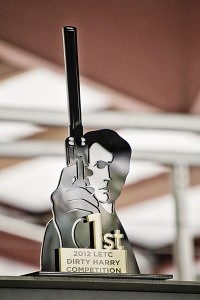 |
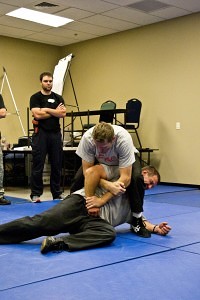 |
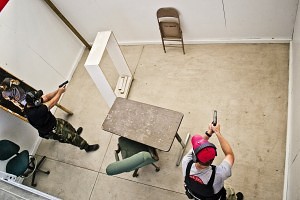 |
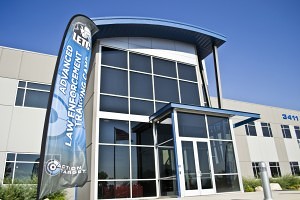 |







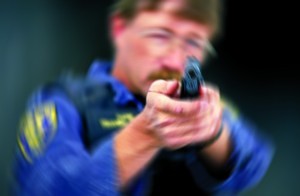 The officer then hit me with a question, “How would being injured in a fire fight encounter affect your firearm accuracy?” Being young and cocky, my response was, “That should not matter, sight alignment and sight picture would be the same. I still should be able to hit the threat no matter what.” The old salty police officer looked at me as he leaned back in his chair and just smiled. After a few moments of both of us just staring at each other, the old guy said, “I will give you credit for being a good firearms instructor, but I can see that there are some things you have yet to experience in this life as a police officer.” After that brief lunch, it was as if I had just been educated by one of the three wise men.
The officer then hit me with a question, “How would being injured in a fire fight encounter affect your firearm accuracy?” Being young and cocky, my response was, “That should not matter, sight alignment and sight picture would be the same. I still should be able to hit the threat no matter what.” The old salty police officer looked at me as he leaned back in his chair and just smiled. After a few moments of both of us just staring at each other, the old guy said, “I will give you credit for being a good firearms instructor, but I can see that there are some things you have yet to experience in this life as a police officer.” After that brief lunch, it was as if I had just been educated by one of the three wise men.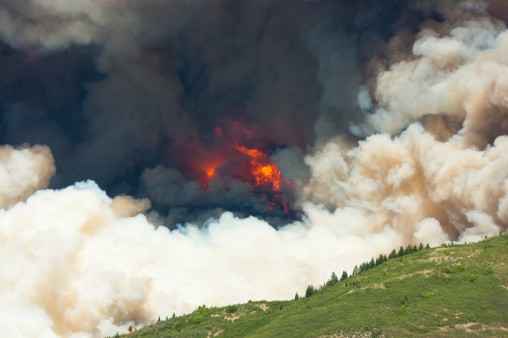 More than 20 wildfires have been started by target shooting this year in Utah alone with dozens more started in Idaho, New Mexico, Arizona, Nevada, and Washington. Many of those fires could have been prevented or stopped had the shooters been prepared. Here is a list of 10 things shooters can do to prevent wildfires while target shooting:
More than 20 wildfires have been started by target shooting this year in Utah alone with dozens more started in Idaho, New Mexico, Arizona, Nevada, and Washington. Many of those fires could have been prevented or stopped had the shooters been prepared. Here is a list of 10 things shooters can do to prevent wildfires while target shooting: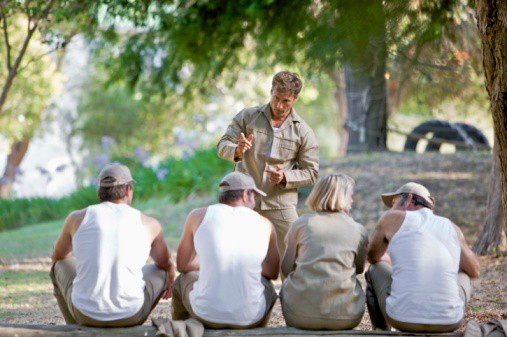
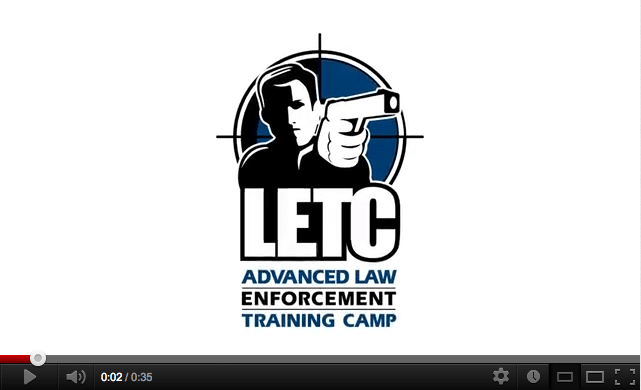
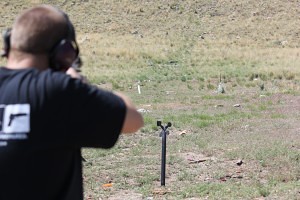 You asked for it, so we’re giving it to you: our first reactive steel target under $50.
You asked for it, so we’re giving it to you: our first reactive steel target under $50.  The Spinning Jack is a safe way to enjoy shooting with the family without having to go down range to reset or replace your target. With alternating circle and square plates, the jack spins in its stand when shot so there is always an exposed paddle to engage. Made of 1/4″ AR500 armor steel, the Spinning Jack can be shot with anything from .22 rimfire to .44 magnum.
The Spinning Jack is a safe way to enjoy shooting with the family without having to go down range to reset or replace your target. With alternating circle and square plates, the jack spins in its stand when shot so there is always an exposed paddle to engage. Made of 1/4″ AR500 armor steel, the Spinning Jack can be shot with anything from .22 rimfire to .44 magnum.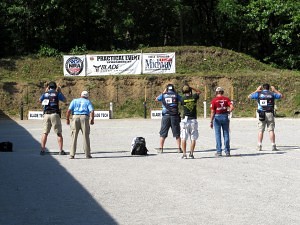 “The Bianchi Cup is unique from other shooting competitions because it uses turning targets and other target systems a bit more advanced than you would normally see at a competition,” said David Mathis, Director of Marketing for Action Target. “Those systems are what we specialize in at Action Target, so working with the NRA to support this match is something we are proud to do each year.”
“The Bianchi Cup is unique from other shooting competitions because it uses turning targets and other target systems a bit more advanced than you would normally see at a competition,” said David Mathis, Director of Marketing for Action Target. “Those systems are what we specialize in at Action Target, so working with the NRA to support this match is something we are proud to do each year.”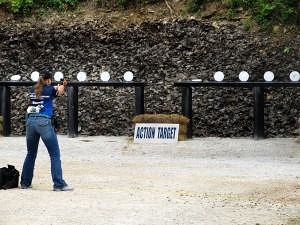 The Midway USA & NRA Bianchi Cup features four different matches shooters can compete in: The Practical, The Barricade, The Moving Target, and The Falling Plate events. Shots are fired from 10 yards up to 50 yards with the shooters’ scores determined by their accuracy on each target. The shooters’ final scores are the sum of their scores for all four matches. This year 237 shooters competed for the national title with the Bianchi Cup going to
The Midway USA & NRA Bianchi Cup features four different matches shooters can compete in: The Practical, The Barricade, The Moving Target, and The Falling Plate events. Shots are fired from 10 yards up to 50 yards with the shooters’ scores determined by their accuracy on each target. The shooters’ final scores are the sum of their scores for all four matches. This year 237 shooters competed for the national title with the Bianchi Cup going to  Shooting on paper is a great way to sight-in rifles and score trainings, and is great for qualifications held by law enforcement agencies. Paper allows a shooter to see where shots land, illustrating how tight groups are. The
Shooting on paper is a great way to sight-in rifles and score trainings, and is great for qualifications held by law enforcement agencies. Paper allows a shooter to see where shots land, illustrating how tight groups are. The 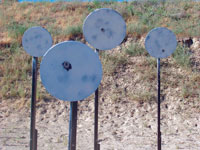 Just like in all athletic training, the body subconsciously remembers how to repeat or orchestrate all the different variables required for a successful movement, or in this case, shot. The ability that steel targets offer in regards to instantaneous feedback can actually enhance training, speed, and accuracy. This is especially important for tactical shooting scenarios with movement, such as moving plates and targets. Having multiple senses invoked during this training process conditions the shooter to become a more powerful and effective shooter.
Just like in all athletic training, the body subconsciously remembers how to repeat or orchestrate all the different variables required for a successful movement, or in this case, shot. The ability that steel targets offer in regards to instantaneous feedback can actually enhance training, speed, and accuracy. This is especially important for tactical shooting scenarios with movement, such as moving plates and targets. Having multiple senses invoked during this training process conditions the shooter to become a more powerful and effective shooter. The specific purpose of the Portable Target Course Book is to “ensure trainees a program that is designed to develop trainings that are safe, test fundamental skills, increase and enhance movement, improve the target selection thought processes, and enhance overall tactical awareness.” Action Target’s Portable Targets have become an industry standard and leader and the course book allows for a better overall training experience.
The specific purpose of the Portable Target Course Book is to “ensure trainees a program that is designed to develop trainings that are safe, test fundamental skills, increase and enhance movement, improve the target selection thought processes, and enhance overall tactical awareness.” Action Target’s Portable Targets have become an industry standard and leader and the course book allows for a better overall training experience.